Do you want to improve the sound quality of your recordings or signal processing? Do you find yourself wondering how to get crisper highs, better clarity, and less interference when it comes to certain audio tasks? If so, then understanding what a high pass filter is could be one of the best tools for achieving these goals! A high pass filter is a powerful tool that can be used to eradicate low-frequency content, including hums and background noise, from audio signals. This post will provide an in-depth explanation on what a high pass filter is and how it can benefit your audio output. Learn more about this crucial tool now that can help shape your sound’s future!
What is a High Pass Filter?
This filter can be used in audio equipment such as amplifiers and speakers, as well as other applications such as video editing and radio transmission. The main purpose of using a HPF is to reduce unwanted noise from lower-frequency signals and improve sound quality. Additionally, it can help protect sensitive components from damage caused by excessive low-frequency energy.
To better understand how a high pass filter works, it is important to understand its frequency response curve. This curve shows the amount of gain (amplification) at different frequencies. The higher the gain, the stronger the signal is. Above the cutoff frequency, there will be a boost in gain and below this point, the signal will be attenuated or dampened. This allows signals above the cutoff to pass through while rejecting or attenuating those signals below it. [1]

High Pass Filter Circuit
Get rid of those pesky low frequency signals and make way for the high frequencies!
It’s typically used in audio devices to allow only sounds of a certain frequency range to be heard, and can also be used for radio tuning or other purposes. The most common type of High Pass Filter Circuit consists of a capacitor and resistor connected in series between the input signal and output terminals. The resistor reduces the amount of current flowing through the capacitor which then blocks lower frequencies from passing through while allowing higher frequencies to continue on their way.
A variation of this basic circuit can be used with different values for the resistor and/or capacitor to adjust its cutoff frequency or provide more precise filtering capabilities. These circuits are also used in noise suppression and signal conditioning applications, where they are an effective way to reduce or eliminate unwanted frequencies. High pass filters can also be used with analog-to-digital converters (ADCs), allowing only signals in a certain range to be converted into digital data.
Given their widespread usage across a variety of industries, it’s important to understand the fundamentals of high pass filter circuits and how they work. With this knowledge, engineers can design systems that utilize these powerful devices effectively. [2]
High Pass Filter Characteristics
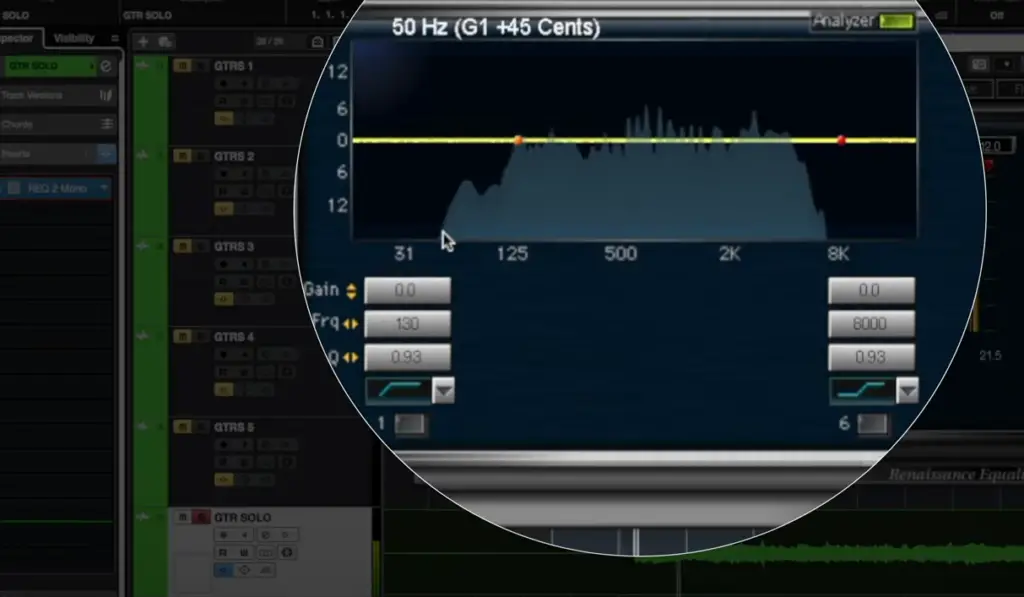
Let’s face it: High pass filters are a must-have when you’re looking to transmit only high-frequency signals. This electronic circuit will allow all frequencies that are above your designated cutoff frequency to flow freely as desired, while also blocking out lower frequencies below the cutoff point. It can be used in many different kinds of applications, from audio processing to image enhancement. High Pass Filters have several characteristics which make them useful for such tasks:
- Roll-Off Rate – The rate at which the filter attenuates (reduces) frequencies below its cutoff frequency is called its roll-off rate. Higher roll-off rates mean more aggressive filtering, while lower roll-off rates will allow a wider range of frequencies to pass through without being affected too much.
- Cutoff Frequency – This determines where the filter begins to attenuate signals. It is typically set higher than the frequency of interest, so that only the desired signal is allowed through without being affected by other frequencies.
- Resonance – This refers to how much emphasis is placed on certain frequencies by the filter. High resonance settings can make certain frequencies sound louder or more distinct than others, while lower resonance settings will allow all frequencies to pass through with less emphasis on any one frequency in particular.
- Q Factor – This measures how sharp or wide the slope of the filter’s cutoff frequency is. A high Q factor will give a very narrow bandwidth, meaning only specific frequencies will be allowed through, while a low Q factor will result in a wider bandwidth which allows more frequencies to pass.
High Pass Filters are essential tools in audio and image processing, allowing engineers and producers to emphasize specific frequencies while reducing or eliminating others. By adjusting their characteristics such as roll-off rate, cutoff frequency, resonance, and Q factor they can be used to achieve a wide range of desired effects. [3]

High Pass Filter using Op-Amp
A High Pass Filter can be made using an Operational Amplifier (Op-Amp). This type of filter is a combination of resistors and capacitors. It works by allowing high frequency signals to pass through the circuit while attenuating low frequency signals. The signal passes through the resistor and capacitor which act as a band-pass filter before reaching the output. The filtered output will have all frequencies higher than the cutoff frequency, allowing only high frequency signals to be heard.
With this type of filter, it is easy to adjust parameters such as cut-off frequency and gain, which makes it ideal for audio applications. In addition, because there are no inductors in the circuit, a high pass filter using an op amp is more stable than other types of filters. This makes it the perfect choice for audio applications that require a high degree of accuracy and stability.
ButterWorth High Pass Filter
Named after its inventor, English engineer and physicist Sir Geoffrey Butterworth, the Butterworth high pass filter is a type of infinite impulse response filter that offers a maximally flat frequency response in the passband. This means that it does not boost or cut any frequencies within the passband, which results in very little distortion of the signal. The cutoff frequency of a Butterworth high pass filter is the point at which the amplitude of the signal begins to roll off (or decrease).
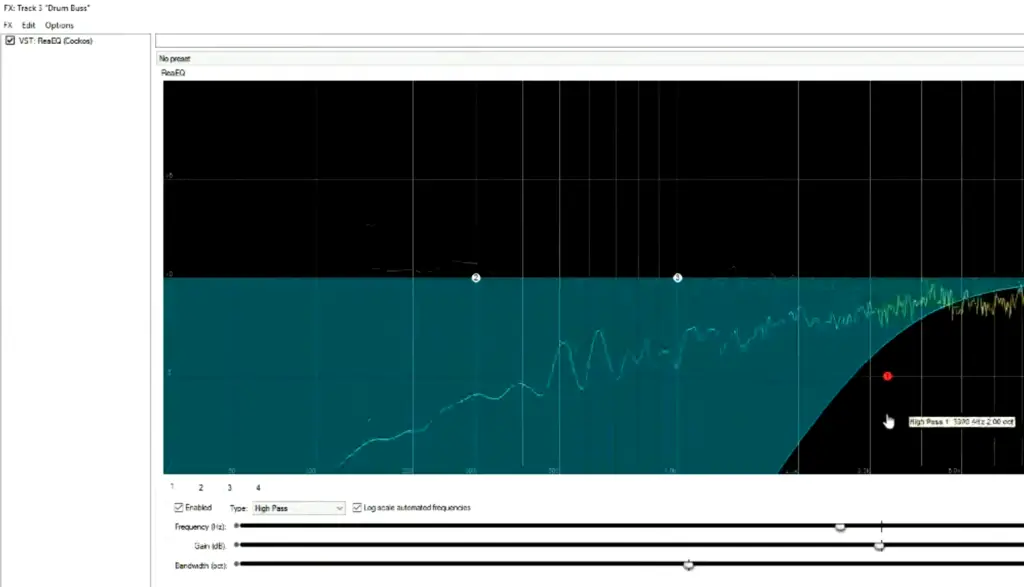
Applications of High Pass Filter
In audio, a high pass filter is used to reduce the low-frequency rumble and hum from recordings, while still preserving mid and high-range frequencies. High pass filters are also used in image processing to enhance detail by removing subtle background noise or smoothing out small imperfections. Finally, they’re used in telecommunications to mitigate crosstalk between adjacent lines of communication. All these applications rely on the capability of high pass filters to admit signals with a frequency above a certain threshold while blocking out those below it.
By doing so, undesired elements can be removed while desired signals remain intact — allowing for clean amplification of sound or image without interference or distortion. High pass filters provide an essential tool for many modern day applications that require precise control of audio and video signals. [4]
The Capacitor’s Impedance
This type of filter is used in systems where you want to block low-frequency noise or where you want to emphasize higher-frequency signals. The cutoff frequency is determined by the capacitance of the capacitor used in this type of filter, which determines its impedance. The higher the capacitance, the lower the impedance and therefore, the lower the cutoff frequency. If too much capacitance is introduced into this type of filter, frequencies below some predetermined level will not be blocked out.
Therefore, it is important for users to ensure that their high pass filter has the correct capacitance to ensure that all unwanted low frequencies are properly blocked. This can be done by adjusting the value of the capacitor, which can be achieved with either a variable capacitor or multiple fixed capacitors of different values. If an amplifier is being used in conjunction with this type of filter, then it is also important to ensure that its gain is set correctly so as not to amplify any noise below the cutoff frequency. Properly setting up a high pass filter will ensure that only desired signals are allowed to pass through it.
In addition to being used for audio applications, high pass filters can also be used in image and video processing systems, where they can be effective at removing unwanted low-frequency noise from images and videos while preserving the higher frequency details. This type of filter can also be used for antenna designs, where it helps to block out interfering low-frequency signals that could otherwise interfere with reception.
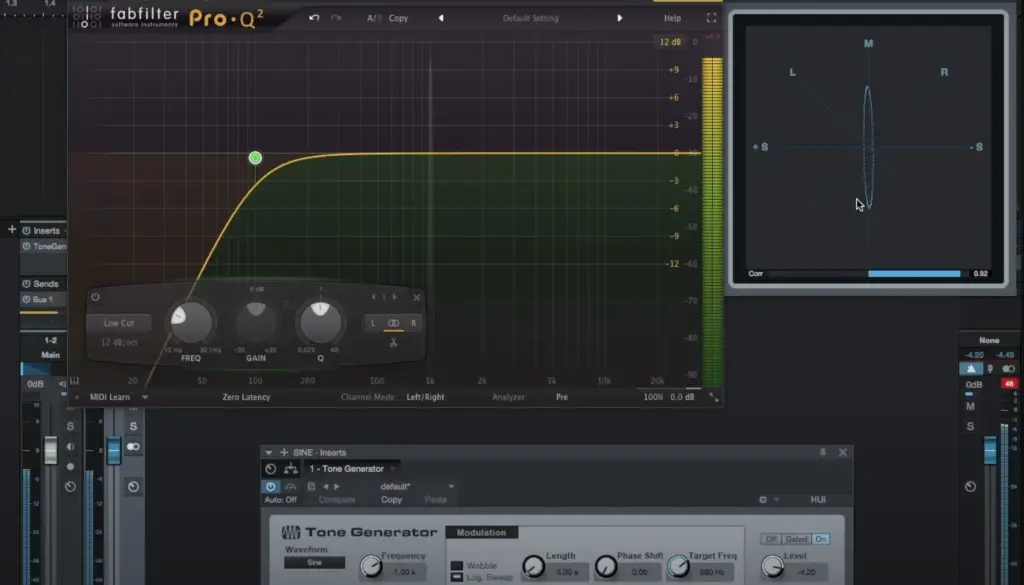
Cutoff Frequency and Resonance
When creating a high pass filter, the cutoff frequency is an important factor. The cutoff frequency is the point at which the signal will begin to be attenuated, or reduced in volume. Typically, this frequency lies somewhere between 20 hertz and 20 kilohertz. It can also be adjusted depending on what type of sound you are trying to achieve. Additionally, instead of being abruptly cut off at the designated frequency, resonance allows for a gradual decrease in amplitude when frequencies above the designated cutoff overlap with those below it.
This creates a smoother transition that helps to maintain the integrity of the original sound without making it too harsh or distorted. By manipulating both of these factors correctly, you can create a highly effective high pass filter that produces the desired sound. [5]
How to Use a High Pass Filter?
A high pass filter is used to allow higher frequency signals to pass through while rejecting lower frequencies. It can be used in a variety of ways, such as attenuating bass frequencies or eliminating background noise from recordings. There are two main types of high pass filters: active and passive.
Active High Pass Filters use an amplifier circuit to block low frequency signals, allowing those with higher frequencies to pass through. The control knob on the amplifier allows you to adjust the cut-off point for which frequencies will be blocked. As the knob is turned, lower and lower frequencies are filtered out until only those above the selected threshold remain audible.
Passive High Pass Filters use inductors, capacitors, and resistors wired together in a specific circuit to selectively filter out low-frequency signals. The cut-off point for the filter is determined by the size of the components used and can be adjusted by changing the values of the capacitors or resistors.
No matter which type you choose, a High Pass Filter can be an invaluable tool for audio engineers looking to control their sound. It’s important to experiment with different settings on both active and passive HPF filters to get just the right sound you’re after. With a bit of practice, your recordings will be cleaner and more professional than ever before!
When to Use a High Pass Filter?
1.) Remove Extraneous Low Frequencies
A high pass filter can be used in audio recording and mixing to remove any low frequencies that are not part of the intended sound. This is especially important when recording instruments with a lot of sub-bass frequencies such as kick drums and bass guitars, as they can often overwhelm other signals if left unchecked.

2.) Remove Environmental Noise
A high pass filter can also be used to reduce environmental noise such as hum and hiss from an audio signal. By removing these low frequencies, the background noise is minimized and the desired signal is more audible.
3.) Improve Signal Quality
In some cases, a high pass filter can help improve the quality of a signal by reducing any unwanted artifacts that may exist in the lower frequency range. This can make a difference when dealing with signals that have gone through extensive processing or analog-to-digital conversion processes.
4.) Create Special Effects
High pass filters can also be used creatively to create various special effects. For example, filtering out bass frequencies can give a “thin” sound to vocals or instruments which has become popular in modern music production.
5.) Increase Gain Before Feedback
In live sound reinforcement, a high pass filter can be used to increase gain before feedback. By filtering out the low frequencies, it becomes easier to get more volume out of a system without having to worry about feedback as much.
6.) Optimize Headroom
A high pass filter can also be used to optimize headroom in a mix. By removing low frequencies, the overall level of the mix can be raised without compromising clarity or dynamic range. In conclusion, a high pass filter is an essential tool for any audio engineer or musician looking to get the most out of their productions.
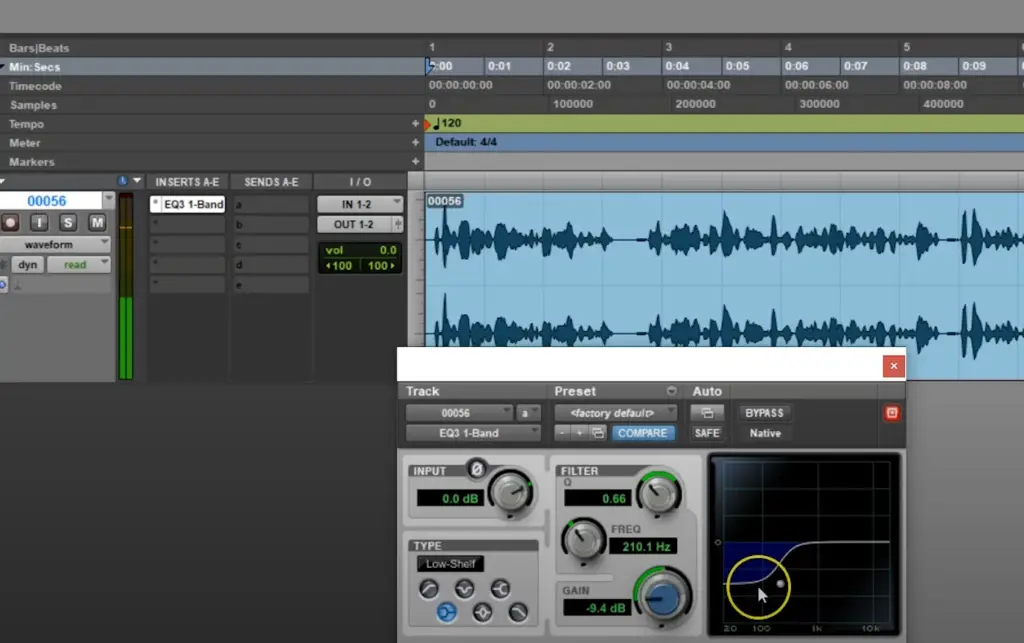
With its ability to remove extraneous low frequencies, reduce environmental noise, improve signal quality and create special effects, it is no wonder that this type of filter is so widely used in both studio and live settings. [6]
FAQ
What is a high-pass filter used for?
A high-pass filter is mainly used to allow only higher frequencies to pass through it, while blocking out the lower frequencies. It can be used for a variety of audio and video applications, including noise reduction and eliminating low frequency rumble in recordings. It can also be employed in EQ settings to boost higher frequencies or reduce bass. Generally speaking, when setting up a sound system, a high-pass filter should be applied to all the speakers that are not playing bass or subwoofer parts, in order to prevent them from being overloaded by the low end.
How does a high-pass filter work?
A high-pass filter works by utilizing capacitors and resistors that create an electrical circuit which attenuates or reduces the amplitude of frequencies below the cut-off point. When a signal is sent through the filter, only those frequencies that are above the cut-off point will pass, while everything else is blocked. The frequency response curve for a high-pass filter typically looks like an upside down U shape which slopes downwards from left to right. By adjusting the values of capacitors and resistors, you can adjust where on the curve the cut-off point lies and thus determine which frequencies get filtered out.
What is a low-cut or high shelf filter?
Low-cut filters are typically used to reduce rumble or other low frequency noise in recordings, as well as add clarity to vocal and instrumental parts.
Are high-pass filters exclusively used for audio and video?
No – high pass filters can be used for a variety of applications beyond just audio and video. For example, medical imaging systems use them for filtering out low frequency artifacts and improving image quality; electronics engineers use them in electronic device designs; software developers employ them in various algorithms; astronomers utilize them to filter out cosmic background radiation; and many more.
What is a high-pass filter example?
A common example of a high-pass filter is a crossover network used in audio systems to separate the low frequencies and send them to a subwoofer while sending the higher frequencies to the main speakers. Another example would be using a high-pass filter on an image, where all pixels below a certain brightness are removed, creating a sharper contrast between bright and dark areas. High-pass filters can also be used in scientific applications such as measuring acoustic waves or analyzing signals from electrocardiograms. In general, any situation where you need to remove lower frequency components from a signal or image is likely to benefit from using a high-pass filter.
Does a high-pass filter lead or lag?
High-pass filters have the opposite effect of low-pass filters, and will lead input signals instead of lagging them. In other words, high frequencies are passed more quickly than lower frequencies. This makes them useful for preserving the integrity of transient signals by allowing fast transients to pass through with little or no delay.
What type of filter is a high-pass?
A high-pass filter is a type of frequency selective filter that is designed to pass signals with a certain frequency or above while attenuating signals below that frequency threshold. The cutoff frequency marks the point at which the output signal is reduced by 3 dB (half its original power). High-pass filters are used in many applications such as audio processing, image processing, and scientific analysis.
Does a high pass filter block low frequencies?
No, a high pass filter does not block low frequencies; instead it boosts them. A high pass filter is an audio frequency filter that allows high-frequency signals to pass through while attenuating (reducing) signals with frequencies lower than the cutoff frequency of the filter. The cutoff frequency is usually set at around 80 Hz in order to remove bass from a signal, creating a brighter sound. Although this effect can be useful for certain types of audio processing, it should be used sparingly as too much filtering can make the sound thin and tinny.
Useful Video: Vocals: High Pass Filter and EQ (Best Practices)
Conclusion
A high pass filter is an essential tool for any audio engineer. It allows sound designers and engineers to control the upper frequencies of a signal, preventing unwanted noise and reducing the risk of clipping or distortion. It can also be used to shape the tone of a signal by boosting or cutting various frequency ranges. High pass filters are typically found in audio mixing consoles, outboard gear, plug-ins, and more. With its ability to clean up signals while still allowing instruments to remain audible and clear, it’s easy to understand why this type of filter is so important in modern music production.
High pass filters can make a huge difference when it comes to creating professional sounding mixes. However, it’s important to use them with caution—too much filtering can cause a signal to lose its character. Working with the right settings and taking care to understand how they affect your mix is the key to getting great results without compromising on sound quality. When used correctly, high pass filters can help take your mixes to the next level.
Overall, it’s clear that a high pass filter is an essential tool for any audio engineer. With it’s ability to clean up signals while still allowing instruments to remain audible and clear, it’s easy to see why this type of filter is becoming increasingly popular in music production today.
References
- https://www.sweetwater.com/insync/what-is-a-highpass-filter-when-should-i-use-it/
- https://www.elprocus.com/what-is-a-high-pass-filter-circuit-diagram-characteristics-and-applications/
- https://www.allaboutcircuits.com/textbook/alternating-current/chpt-8/high-pass-filters/
- https://audiouniversityonline.com/audio-high-pass-filters/
- https://www.utmel.com/blog/categories/filters/what-is-a-high-pass-filter
- https://www.sciencedirect.com/topics/engineering/high-pass-filter










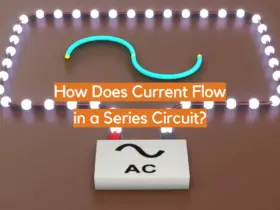



Leave a Reply